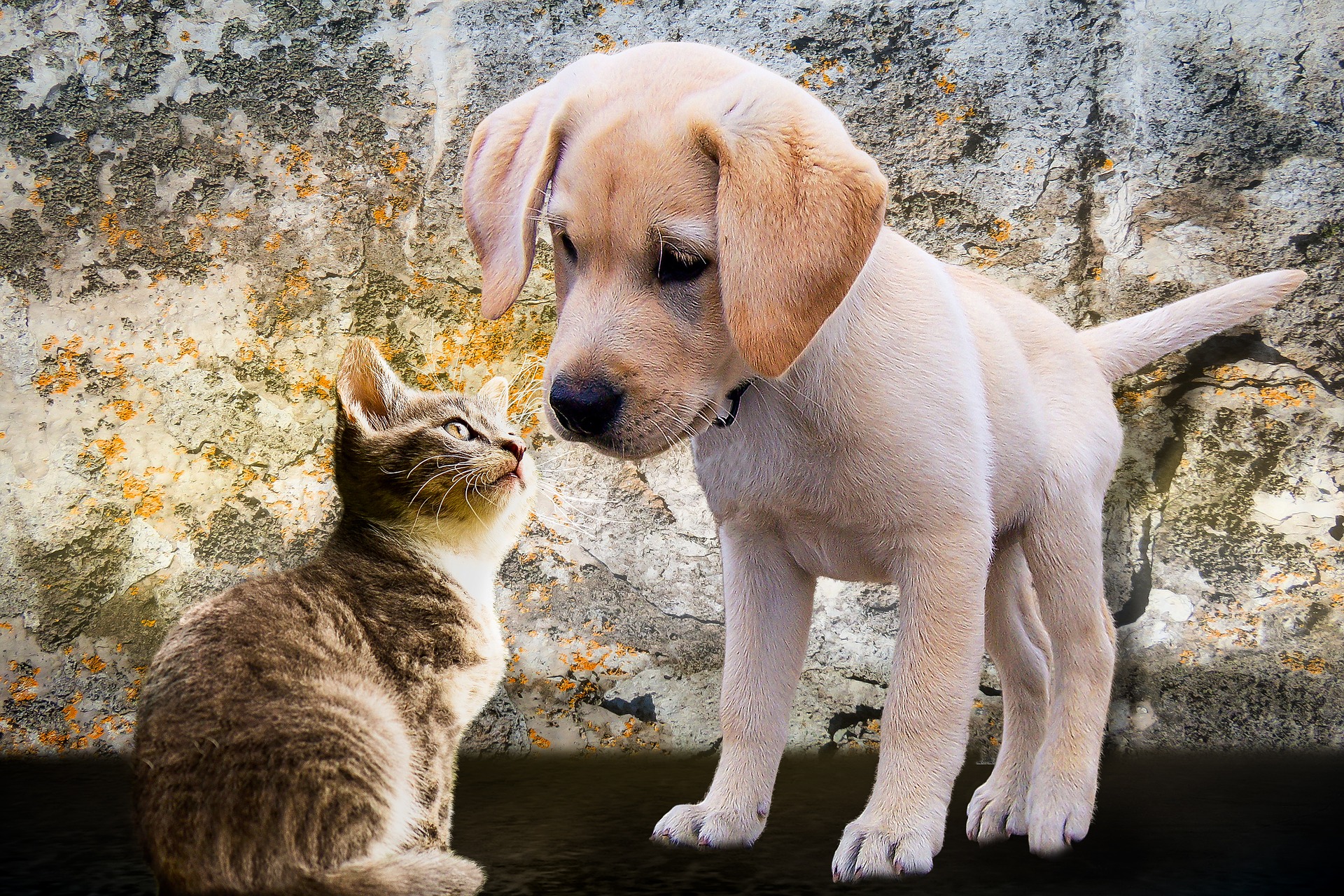2019-01-21

If you are fortunate enough to bring a new member - a dog or cat - home, have you considered whether it can get on well with your pet (dog or cat) at home? Actually, due to the different nature of these two furry animals, there is no definitive answer to this question. Whether they become good friends or mortal enemies depends on the practical action of the owner. Take a look at the following tricks to learn how to play the role of a peacemaker.
1. Get to know the character of cats and dogs
Before you consider raising another pet, you should become familiar with the character of a dog or cat. Typically, dogs are gregarious and loyal, so they are always regarded as the best companion for humans. Sometimes, however, they are territorial when other animals attempt to invade their house. In contrast, cats are more aloof and solitary, so they love to spend their leisure time at home all day long. But they are easily startled by harsh sounds or feel threatened by other larger animals, such as dogs. Some older cats might behave territorially when they suddenly meet a new “roommate” at home. Therefore, it is difficult to know which of the two, dogs or cats, is more intelligent as it depends on several factors and circumstances.
2. Take personality into account
When you adopt, buy or rescue a new puppy or kitten, you will not know much about his personality in a short time unless you can get his background story from the previous owner. Make sure he is not aggressive or timid, so as to make a good impression when he meets your pet. It is also important to take the personality of your elder dog/cat into account. In general, an aging dog or cat would hate to have to share their space with an unfriendly newcomer, and an energetic dog might make a kitten feel scared and hide into a dark corner.
If two animals have never lived with other animals or their personality can not be matched, you should make a backup plan before they meet. The following tricks may be helpful.
3. Train your dog
Dogs have endless energy and passion, so most of them love to jump up on a surface or sniff excitedly the feline’s backside. These “rambunctious” behaviors may be threatening to your shy kitten.
Fortunately, compared to cats, dogs are easy to train and obedient, which provides a good opportunity for owners to discipline the dog to get along well with a cat. To teach your puppy to control his impulses towards your cat, you can try to subject him to obedience training that will not only make your puppy well-behaved but is also a fundamental part of assistance dog training. Since service dogs must undergo rigorous training to serve their owners, who suffer from physical disabilities or mental disorders, in almost any location, it is an important skill for them to get along well with other animals.
4. Provide your cat with a protected space
Cats love to stay in a sheltered “base camp” in a high place which can serve as a safe space for sleeping and as a refuge from dog interference. Plus, cats are natural jumpers, so owners can set up a cat tree or install shelves, creating a vertical space that the cat likes to adopt.
In addition to the sleeping area, the owners should also protect the private feline place — the toilet. Cats will not eliminate their feces under the eyeballs of a curious dog. What is more, some dogs like to eat cat feces, which could result in parasitic infections or other health problems. It is advisable to remove the cat litter box from your dog. Building a baby gate and using a covered litter box are good options.

5. Strategy for the first meeting
The first impression can determine the further relationship, not only in humans but also in cats and dogs. Due to the big difference between cat and dog, their first meeting is unpredictable. Fortunately, both love to eat, which helps to build a good first impression.
We can arrange their first meeting in a spacious room and feed them separately in opposite locations. It is better to keep your dog on a leash and build a visible barrier to prevent an early meeting. When they eat their food, they can hear the sound on the other side. When they get used to this sound and behave peacefully, it is time to gradually shorten the distance between them. During this process, they become familiar with the scent of the other. When they can eat close to each other, you can remove the barrier and let them meet. They may sniff each other for a while. If the cat or dog makes aggressive signs, give them some treats to distract their attention. If this does not work, it is better to isolate them by separating them with a baby gate and observe them. However, you should ensure that your dog has undergone obedience training, does not bark and threaten the cat. Plus, you should also trim your cat’s nails to avoid scratching.
6. Raise them together
Most cases where the dog and cat get along well show that the owners raised them together when they were a puppy and a kitten. Because they have a weak territorial awareness at this age, their cognition is weak, so they readily accept other animals. Many experts agree with this opinion.